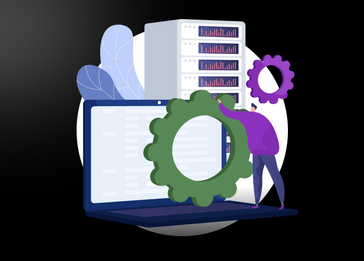In today’s fiercely competitive landscape, the role of business analytics and data-driven decision-making is indispensable. P2H recognizes this all too well. Over the span of 17 years, the company has transformed from a niche service provider into a market leader developing complex, reliable, and easily scalable IT solutions tailored to the needs of corporate giants and governmental bodies. P2H has already garnered the trust of over 100,000 clients, counting Mazda, Maersk, and Qantas.
Business analytics is one of the linchpins enabling the P2H team to set and attain realistic objectives and monitor their progress. Beyond that, the company is actively developing cutting-edge data management solutions for its customers. Dmitriy Kucher, a co-founder of P2H, talks about the evolution of BI within the organization and shares insights on how to effectively implement it to yield tangible results.
How does business analytics contribute to P2H’s strategic and operational activities?
Business analytics and OKR (Objectives and Key Results) serve as the foundational pillars for P2H. They form the core of our management framework. BI enables us to set goals based on real data. With real-time insights, various P2H teams, along with myself as one of the main stakeholders, can promptly identify when objectives are at risk and make data-driven decisions. BI also allows us to test hypotheses and discard ineffective strategies swiftly.
Could you elaborate on the specific tools you employ for business analytics?
We utilize Google Sheets for manual or semi-manual data entry, collaborative platforms like Atlassian and PostgreSQL for data storage. Our primary analytics platform is Microsoft Power BI, and when necessary, we turn to Looker Studio for crafting custom reports. It’s critical that key dashboards and data are accessible and comprehensible to all team members.
I also want to point out that Business Intelligence typically commences with data collection. Before implementing advanced tools, it’s essential to master data gathering and interpretation. At P2H, we began collecting data long before we had a fully-fledged BI system. I established gathering processes through automatic, semi-automatic, or manual means, and verified data suitability for decision-making. This strategy proved to be invaluable as we progressed.
Where can you source your data from?
Data sources are diverse, including professional platforms, customer interaction records, sales data, and website analytics. This breadth will enable you to gain insights into customer behavior, market trends, and operational efficiency. Nevertheless, following the principle of collecting all data but focusing only on what’s important is crucial in data-driven management. Not all information is strategically useful, and decisions should be grounded in key metrics to prevent data overload.
How has BI evolved within P2H over time?
In our early days, our business primarily revolved around converting designs into HTML. As the market evolved and our services expanded, our company grew substantially. We established new teams, departments, expanded our client base, ventured into new geographies, and diversified our expertise. Manual management became increasingly ineffective. Seeking the optimal solution, we embraced a data-driven approach.
Initially, we concentrated on understanding the cost of acquiring each customer. Clients came through various channels, such as organic traffic, paid PPC advertising, business development efforts, or referrals. Accurately calculating the cost of attracting each sales qualified lead was critical. Though we made mistakes along the way, we honed our processes.
When it became evident that data-informed decisions were effective, we integrated analytics into all departments. We transitioned from a state of chaos to gaining clear insights into our most profitable customer segments, efficient teams, and acquisition costs for different client types.
How have you contributed to this advancement?
In the beginning, I played multiple roles, serving as a stakeholder, a BI developer, and a business analyst at the same time. In this capacity, I not only shaped our objectives but also formulated data collection requirements, processed data, and even constructed the BI system for the first iteration of marketing cost analysis.
This experience showed me the immediate value BI could bring to our management efforts. However, it also became evident that establishing a robust infrastructure within the company would demand substantial effort. As a result, we assembled a dedicated team to reach our goal.
What were the challenges you encountered during the BI setup process?
In our initial foray into BI, aside from connecting Google Analytics and Google AdWords, we handled everything in-house. We scripted custom calculations, manually computed figures, and verified the results with checksums. It took a while for the numbers to reconcile. We even sought external help.
What unexpected insights have you gained through BI?
Well, one example is us discovering a type of clients with profitability nearly three times higher than the average. Unfortunately, we didn’t see opportunities for expansion in this area. However, we also identified low-margin projects and began reducing expenses on them, resulting in an overall increase in profitability. We also identified ineffective marketing tools and stopped investing in them, which led to significant cost savings.
Can you share a case study of BI usage by one of your clients?
I can share an interesting case with a marketing agency specializing in affiliate management. The company employed Microsoft Power BI to gather business metrics related to affiliate networks and evaluate various KPIs. Some clients required monthly and even weekly analyses of partner campaigns.
As the company’s client base expanded, their databases grew from thousands to several hundred thousand records. As a result, creating a single report in Power BI could take more than five hours. The client approached us to analyze and optimize their reporting system.
What specific changes did you make for them?
Our Power BI specialist restructured large tables. Instead of a single massive file, we provided segmented tables based on parameters like creation date and client location. This simple adjustment significantly accelerated report generation and reduced the computational load on AWS. To enhance system performance and stability, we overhauled the Power Query backend. The time needed to create analytical reports in Power BI decreased from five hours to less than ten minutes.
Additionally, we implemented a machine learning-based forecasting system. The latter enabled the agency to evaluate marketing expenses, forecast revenues from various campaigns, prioritize the most profitable channels, and ultimately identify the most lucrative investment opportunities for their clients.
For which companies is business analytics most relevant?
I would say for companies with diverse operations, a wide customer base, and a variety of teams. A data-driven approach yields valuable insights in such settings. Businesses that offer a relatively small product line or high-margin services to a limited customer base may not need a sophisticated analytics infrastructure.
How should one prepare for the implementation of BI?
Preparing includes defining clear goals for top-level managers. A vague desire to integrate business analytics is not enough. Whether the client is internal or external, they should understand the questions they seek to answer. For instance, evaluating the performance of a particular unit is a common objective.
Also, as I’ve already mentioned, effective business analytics implementation requires the involvement of two specialists: a BI developer responsible for data collection, implementation and maintenance of the BI system, and a business analyst who gathers the requirements and agrees on which metrics are needed for stakeholders.
Why is it better to separate those roles?
A business analyst has to recognize stakeholder’s needs and seek optimal solutions. They should possess a maturing skill set and navigate various contexts, from accounting inquiries to marketing tasks. Though a BI developer may take on some of the analyst’s responsibilities, my experience shows their performance is much better when well-defined requirements are already in place.
In case someone fulfills multiple roles, as I once did, they inevitably make compromises even in situations where that is not necessary. When there is a dedicated specialist for each role, everyone pursues their own interests. At their intersection, best ideas are born.
What technical obstacles might hinder BI implementation, such as data stored in disparate formats?
In most cases, expecting data to be neatly organized is like chasing a unicorn. Data is rarely stored in a single location. Established businesses are often hesitant to change their processes drastically just for data collection, as it carries risks and unpredictable outcomes. In my opinion, this is a smart choice.
BI should guide us on what needs to change, rather than the other way around. Instead of a full-scale overhaul of a functional system, it is better to start competently observing it. While it may require manual work in some cases, it is often simpler than revamping processes and training teams to adapt.
Ensuring data completeness and validity (accuracy and adherence to defined rules and logic) also matters. When data is incomplete, you need to decide if it’s enough for analysis. In cases of partial validity, you must assess whether the current accuracy is sufficient. In some cases, you can appoint an employee responsible for validation. In others, using neural networks to automatically identify and rectify invalid data may be beneficial.
The process of collecting and analyzing data is like formulating and solving an equation; the first step is usually more complex.
What are common mistakes businesses encounter when implementing business analytics?
In my interactions with clients, I have seen that BI analysts often overlook scalability and optimization. As a result, data is stored in large files, calculations are performed across various services, excessive metrics are collected, and updates occur with significant delays. Critical issues may not become apparent until the system faces increased load. In such cases, we have to conduct in-depth assessments and sometimes completely reconstruct BI.
Managing analytics, particularly in larger and more diverse companies, often resembles a marathon. To maintain it, every aspect of the process must be documented. We regularly update our system descriptions, detailing what data is collected, its sources, how metrics are calculated, and why. This approach allows us to easily adapt projects when necessary.
In conclusion, what trends do you foresee in the business analytics market?
I believe the demand for business analytics will increase for a straightforward reason. Competition continues to intensify, and the market is becoming less forgiving of mistakes. Basing management decisions on data, rather than intuition, is becoming paramount.









